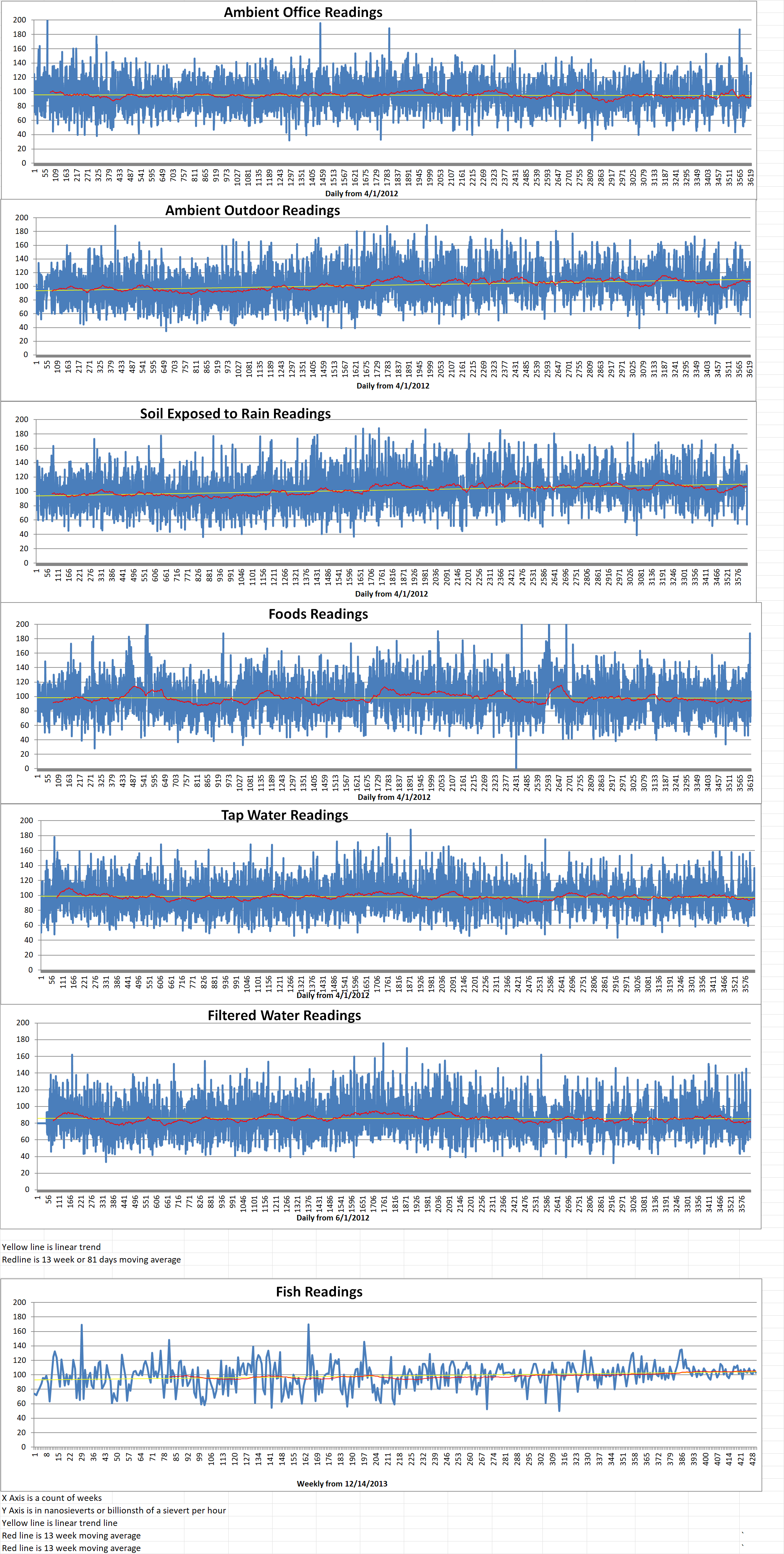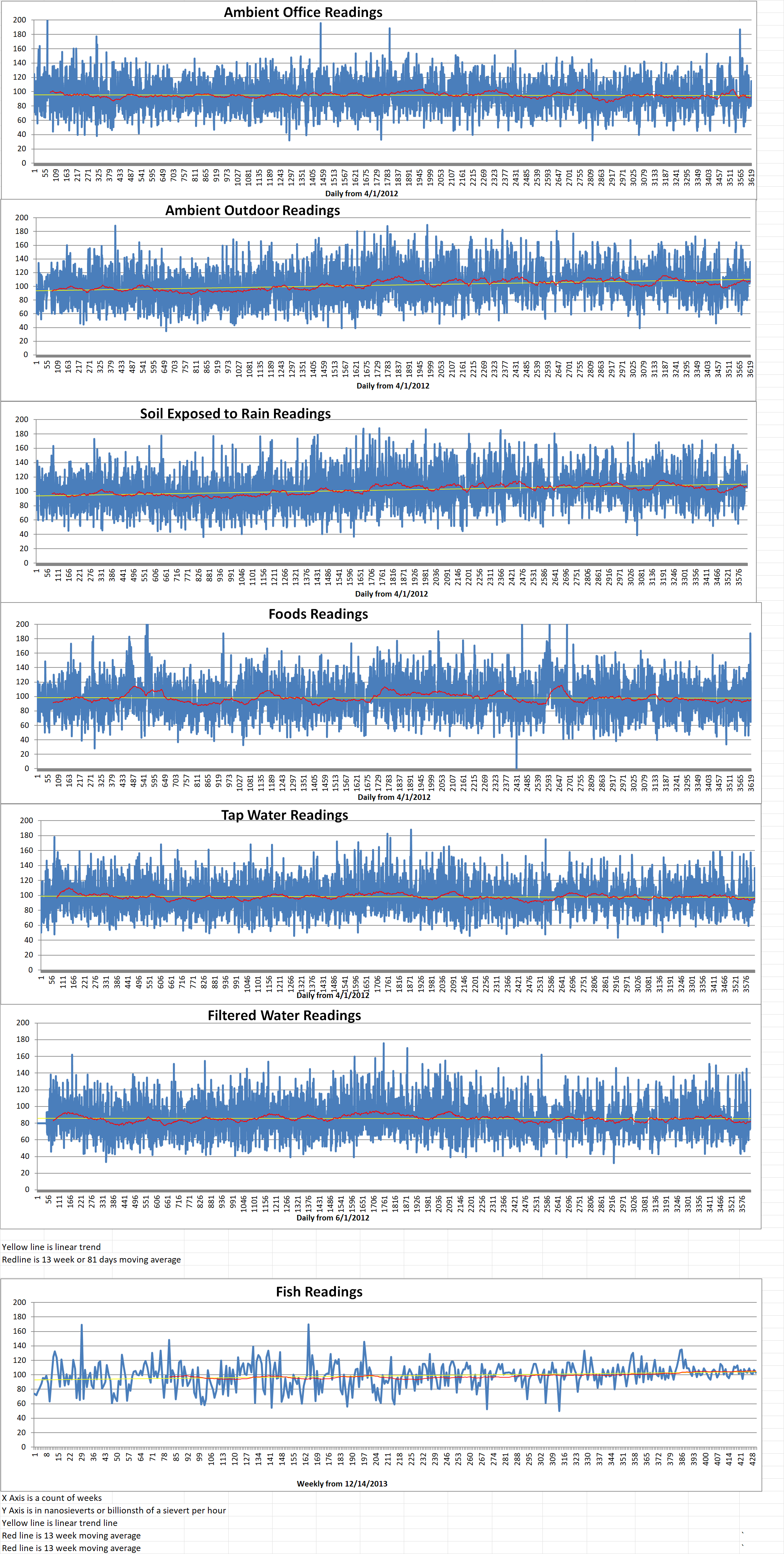Blog
-

Geiger Readings for May 31, 2022
Ambient office = 111 nanosieverts per hour
Ambient outside = 104 nanosieverts per hour
Soil exposed to rain water = 107 nanosieverts per hour
English cucumber from Central Market = 107 nanosieverts per hour
Tap water = 74 nanosieverts per hour
Filter water = 63 nanosieverts per hour
-

Nuclear Reactors 1031 – New Study Suggests Small Modular Reactors Produce More Spent Nuclear Fuel – Part 1 of 2 Parts
Part 1 of 2 Parts
Nuclear fission reactors generate reliable supplies of electricity while emitting little carbon dioxide when operating. A conventional nuclear power reactors in the one-gigawatt range also produces spent nuclear fuel that must be isolated from the environment for hundreds of thousands of years. The cost of such a reactor can be tens of billions of dollars.
In order to deal with these challenges, the nuclear industry is developing small modular reactors (SMRs) that generate less than three hundred megawatts of electricity and can be assembled in a factory. Nuclear industry analysts say that these advanced modular designs will be cheaper and produce fewer radioactive byproducts than conventional large-scale reactors.
However, a report published on May 30th in the Proceedings of the National Academy of Sciences has reached the opposite conclusion.
Lindsay Krall is a former MacArthur Postdoctoral Fellow at Stanford University’s Center for International Security and Cooperation (CISAC). She headed up the team that produced the new report. She said, “Our results show that most small modular reactor designs will actually increase the volume of nuclear waste in need of management and disposal, by factors of 2 to 30 for the reactors in our case study. These findings stand in sharp contrast to the cost and waste reduction benefits that advocates have claimed for advanced nuclear technologies.”
There are four hundred and forty operating nuclear power reactors in the world. They provide about ten percent of the world’s electricity. In the U.S. alone, ninety-three nuclear power reactors generate almost one fifth of the nation’s electricity.
Nuclear power plants emit little carbon dioxide which is a major contributor to global warming. Nuclear advocates claim that as the worldwide demand for clean energy increases, more nuclear power plants will need to be constructed to minimize the effects of power generation on climate change.
Nuclear energy is not a risk-free energy source. In the U.S., commercial nuclear power plants have produced over eighty-eight metric tons of spent nuclear fuel. They have also produced substantial volumes of intermediate and low-level radioactive waste. Spent nuclear fuel constitutes most of the most highly radioactive waste. It will have to be isolated in deep-mined geologic repositories for hundreds of thousands of years. Currently, the U.S. has no program to develop a geological repository even after spending decades and billions of dollars on the Yucca Mountain site in Nevada. Spent nuclear fuel is currently stored in cooling pools or dry storage casks at nuclear reactor sites. It is accumulating at a rate of about two thousand metric tons per year.
Some energy analysts claim that SMRs will significantly reduce the mass of spent nuclear fuel being generated when compared to larger, conventional nuclear reactors. Apparently that conclusion is overly optimistic.
Krall is now a scientist at the Swedish Nuclear Fuel and Waste Management Company. She said, “Simple metrics, such as estimates of the mass of spent fuel, offer little insight into the resources that will be required to store, package, and dispose of the spent fuel and other radioactive waste. In fact, remarkably few studies have analyzed the management and disposal of nuclear waste streams from small modular reactors.”
Please read Part 2 next -
Nuclear News Roundup May 30, 2022
Indonesia needs clear policies on nuclear energy development: BRIN en.antaranews.com
Westinghouse and Bloom Energy Sign Letter of Intent to Accelerate Zero-Carbon, Large-Scale Hydrogen Production in the Nuclear Industry business.com
Top general warns against ‘unnecessary and unfounded views’ on Pakistan’s nuclear program ecomonictimes.indiatimes.com
Israel raises Iran concerns with visiting UN nuclear chief apnews.com
-

Geiger Readings for May 30, 2022
Ambient office = 126 nanosieverts per hour
Ambient outside = 55 nanosieverts per hour
Soil exposed to rain water = 54 nanosieverts per hour
Carrot from Central Market = 100 nanosieverts per hour
Tap water = 108 nanosieverts per hour
Filter water = 93 nanosieverts per hour
-
Nuclear News Roundup May 29, 2022
Ukraine Nuclear Inspectorate Accuses IAEA of Falling for Russian Propaganda usnews.com
Philippine government expert urges adoption of small nuclear reactors asianews.network
Biden to send missile system to Ukraine in U-turn – and issues nuclear warning to Russia news.sky.com
India Missile Test News Live Updates: India successfully test-fires nuclear-capable Agni-4 ballistic missile economictimes.indiatimes.com
-
Nuclear News Roundup May 29, 2022
Ukraine Nuclear Inspectorate Accuses IAEA of Falling for Russian Propaganda usnews.com
Philippine government expert urges adoption of small nuclear reactors asianews.network
Biden to send missile system to Ukraine in U-turn – and issues nuclear warning to Russia news.sky.com
India Missile Test News Live Updates: India successfully test-fires nuclear-capable Agni-4 ballistic missile economictimes.indiatimes.com
-

Geiger Readings for May 29, 2022
Ambient office = 110 nanosieverts per hour
Ambient outside = 27 nanosieverts per hour
Soil exposed to rain water = 129 nanosieverts per hour
Blueberry from Central Market = 95 nanosieverts per hour
Tap water = 73 nanosieverts per hour
Filter water = 63 nanosieverts per hour
-
Nuclear News Roundup May 28, 2022
MEPs, experts criticize green label for gas and nuclear euorserver.com
Scant progress in Iran nuclear row: UN begadistricnews.com
Palisades nuclear power plant plans for 19 year decommissioning wwmt.com
EDF rules out delaying shutdown of Hinkley Point B nuclear power station uk.finance.yahoo.com
-

Geiger Readings for May 28, 2022
Ambient office = 115 nanosieverts per hour
Ambient outside = 136 nanosieverts per hour
Soil exposed to rain water = 136 nanosieverts per hour
Avocado from Central Market = 73 nanosieverts per hour
Tap water = 137 nanosieverts per hour
Filter water = 120 nanosieverts per hour
Dover sole = 103 nanosieverts per hour
